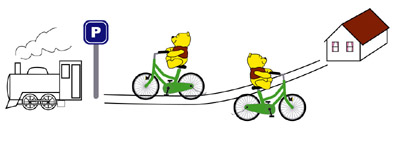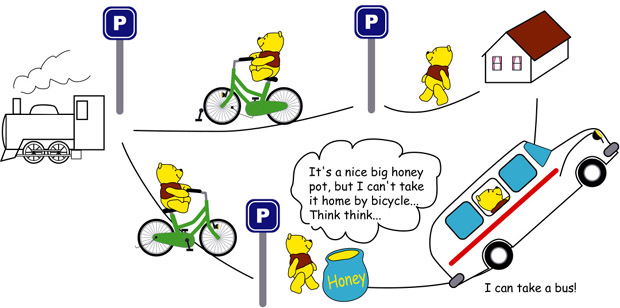Rental Cycle System (RCS) and Community Cycle System (CCS)
by Masahiro Matsuura (August 2003)
In Japan, bikeshare programs are usually divided into two categories: RCS and CCS. RCS is much easier to operate, while CCS provides more convenience for its users.
Rental Cycle System (RCS)
RCS is usually operated at a single rental location. The advantage
of this program is reduction in the size of parking spaces. In Japan,
too many people ride their own bicyles to train stations and parking
space is hard to find there.
Under RCC, bicycles are returned to the rental location in the morning
by business commuters. During day time, students and reverse commuters
ride bicycles away from the station. This counterbalance reduces the
number of bicycles redundantly parked at stations.
In Japan, RCC scheme has been in use for a few decades. RCC's merits
to its users are all relative to the configurations of parking spaces
available for privately owned bicycles. In Japan, such parking spaces
are hard to find and also the fee is somewhat expensive, which makes
RCC possible. Bicycle is not expensive to own and operate, so there
must be incentives other than operation costs (like the scarcity of
parking spots) to make people feel sharing it.

Community Cycle System (CCS)
CCS has been envisioned since the first experiment of bikeshare in
Amsterdam in the 1960s. However, it has been too difficult to realize
until recently. Under CCS, rental locations are scattered around a town,
and users can ride a bike from one location to another without the need
to returning it to the original location. RCS may substitute only private
ownership of bicycles, but CCS can be an alterative for walk trips and
short train/car rides as well.
The difficulty of operating this type of program is keeping a right
balance of the number of bicycles among locations. Bicycles may flock
to certain locations at certain points of the day. The recent European
experiments are all based on this CCS model.

